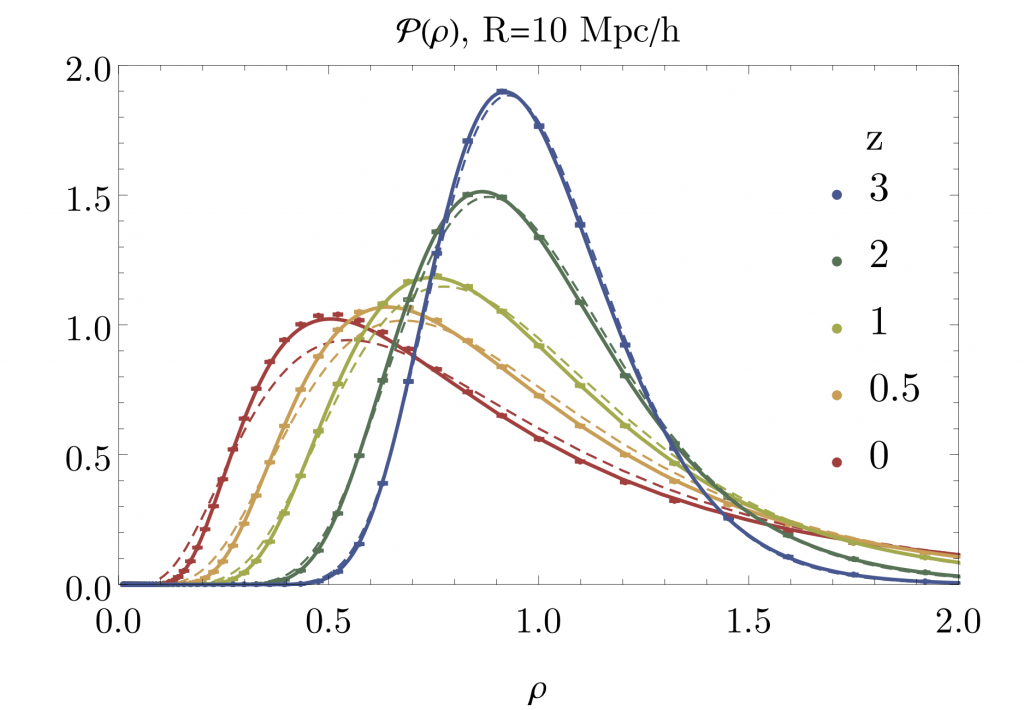Remote Talk: “Cosmology and fundamental physics with one-point statistics” by Cora Uhlemann for the Astro Seminar Series at the Waterloo Centre for Astrophysics (Canada) on Wed, Nov 11, 2020
Over the last decade cosmology has developed into a precision science that is able to determine key properties of our Universe by combining observations and theoretical models. So far a lot of this information comes from the Cosmic Microwave Background (CMB) that provides a snapshot of our Universe when it was only about 380,000 years old. The late-time large-scale structure (LSS) mapped by current and future galaxy surveys can in principle extract much more information by recording a motion picture of how structures form over time.
At early times the physics behind the formation of cosmic structures seen in the CMB is simple and linear. In particular, the distribution of matter is almost Gaussian, meaning that when one picks a random location, one is equally likely to find a region that is slightly more or slightly less dense than the average. A Gaussian distribution of matter is fully characterised by two-point statistics and has a “boring” one-point statistics.

The nonlinear clustering of matter over time changes this picture, because dense regions undergo gravitational collapse that makes them shrink and gain mass at the same time. This leaves a skewed distribution of matter at late times, which is non-Gaussian and has an interesting one-point statistics. We can extract additional cosmological information from this shape to complement two-point statistics and better pin down cosmological parameters.

The matter distribution at high redshift z (early times) almost Gaussian and symmetric around the mean density (rho=1). Gravitational clustering lets initially overdense regions (rho>1) collapse making them smaller and denser. At lower redshift (late times) most of the regions in the universe are underdense.
